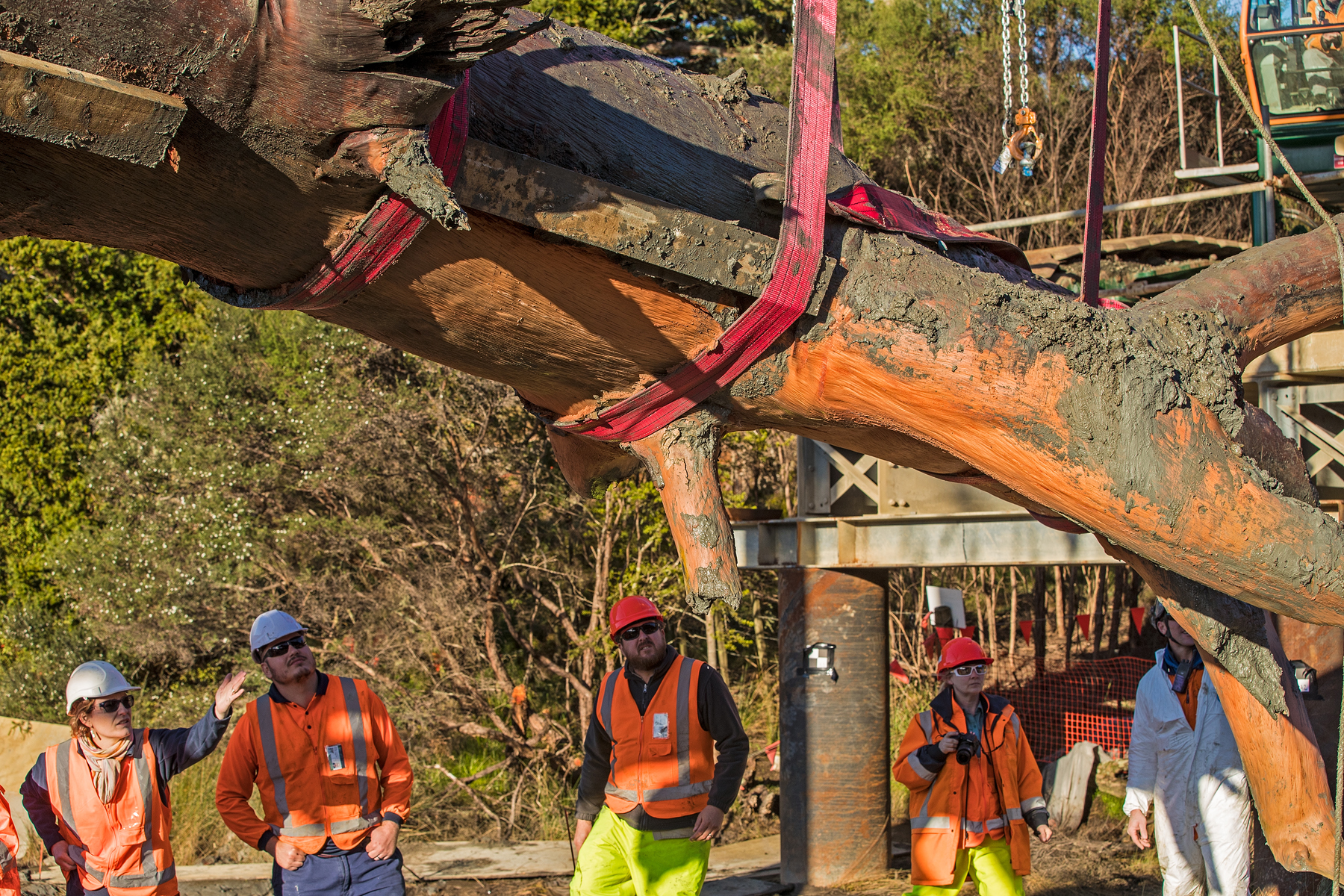The NZ Transport Agency says the taonga discovery on the Ara Tūhono Pūhoi to Warkworth Motorway project is not a partially complete waka as first thought.
Project archaeologist Sarah Phear says the 17 metre Kauri tree trunk has been culturally modified, but “our original interpretation of the discovery has changed now that we have exposed more of the trunk.”
“There is evidence of stones and rocks wedged into the wood to try to split parts off and there are cut edges, but it’s not consistent with waka carving. There are branches and logs around and under the trunk that appear to have been placed deliberately, so it was likely being prepped for processing.”
The Kauri trunk was found near the Ōkahu inlet north of the Johnstone’s Hill Tunnel on April 16 during pile driving for a new motorway viaduct. The site floods every time the tide comes in so the archaeological investigation, in consultation with project treaty partners Hōkai Nuku, Heritage New Zealand and the Ministry of Culture and Heritage, has been muddy and complex.
“It would have been amazing to find a waka, but we have evidence of processing of Kauri which is not often found. It’s really important to date the tree and get core samples to look at pollen counts and the vegetation growing in the area at that time. They’re all pieces of the wider archaeological landscape relating to pre-European settlement,” says Dr Phear.
This week the trunk was lifted out of the ground so archaeologists could study its underside, complete 3D scanning and check the ground where it lay. Nothing significant was found, so it was decided not to conserve the trunk.
The trunk has been buried in the trench a metre or two from where it was found and construction of the viaduct will resume
Hōkai Nuku spokesperson Gena Moses–Te Kani supports the interpretation that it is not a waka. Hōkai Nuku requested that the Kauri be reburied where it was found.
“Archaeology discovers history but it also destroys it. From an iwi perspective we want to leave history where it is, to just be. The artefact is a precious thing, but when we can we should leave it where it is,” says Ms Moses-Te Kani.
The Transport Agency’s Senior Manager Project Delivery, Chris Hunt, says the discovery and investigation of the artefact showed the value of the Transport Agency’s Accidental Discovery Protocol and the training of all staff to recognise and respond appropriately to such discoveries.
“We are all disappointed it’s not a waka, but we are very pleased with how we dealt with this challenging situation and how all parties and partners have worked together to achieve an agreed cultural outcome that respects the discovery,” says Mr Hunt.
He thanked the Northern Express Group (NX2) and its subcontractors Fletcher/Acciona Construction Joint Venture for supporting and helping the archaeological team in its work. NX2 is contracted by the Government in a Private Public Partnership to extend the four-lane Northern Motorway (SH1) 18.5km from the Johnstone’s Hill tunnels to just north of Warkworth.

Project archaeologist Sarah Phear (left) takes a first look at the underside of the Kauri tree lifted out of the Ōkahu Inlet near Pūhoi.